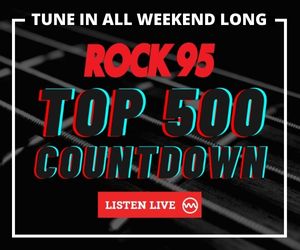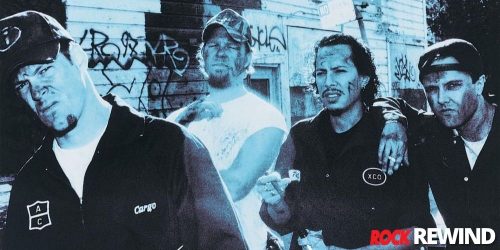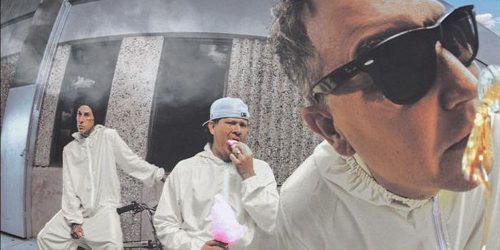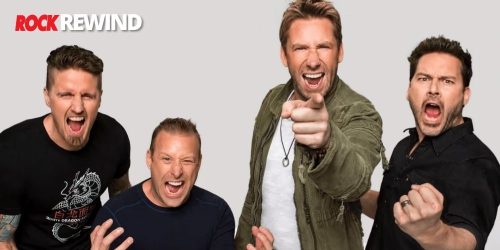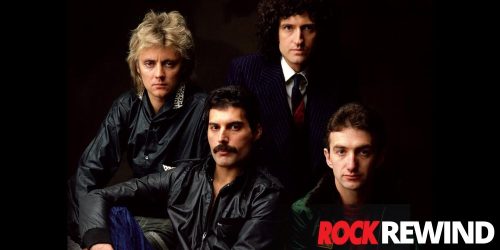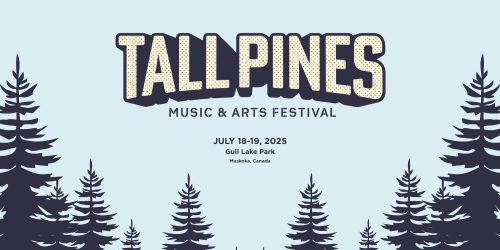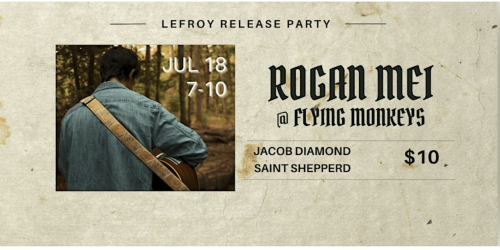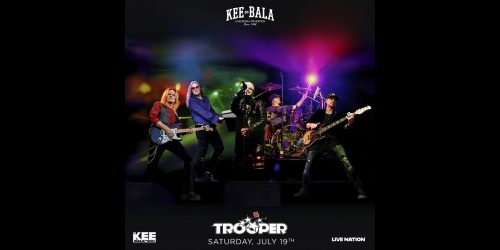Rock Rewind: Neil Young Never Fails To Shock And Surprise Fans
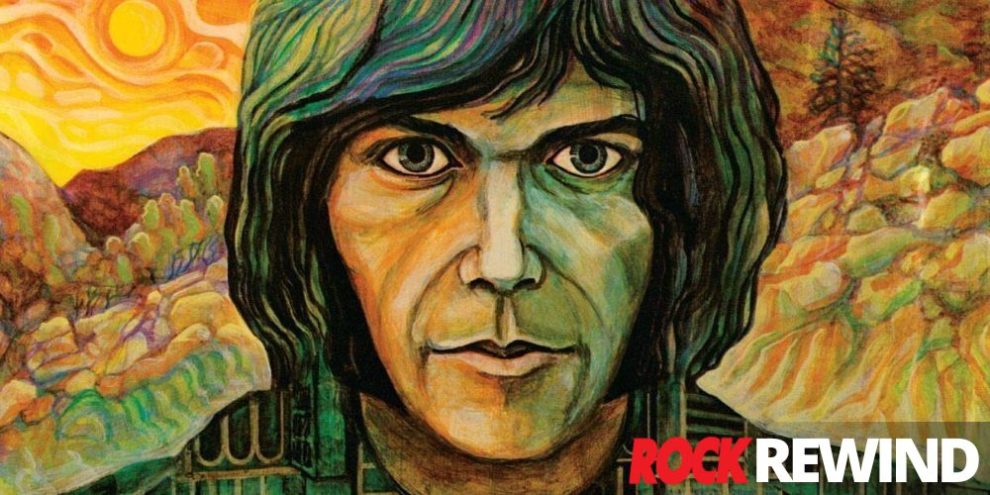
During his musical career, which continues to this day, Neil Young has never been tied to any one thing. He’s played with many artists and groups, released numerous solo albums and has experimented with nearly every genre from folk and rock to electronic and soul.
Often his albums speak to the events happening in his life and all over the world. But he isn’t limited in his material. He’s always experimenting with different sounds, styles, techniques and formats. Some albums performed stunningly, while others were less than admired.
But regardless of how you felt about each release, one thing is certain – you could never say Young was predictable.
Jump To:
The Squires | The Mynah Birds | Buffalo Springfield | Crazy Horse | Crosby, Stills Nash & Young
The Stray Gators | The Santa Monica Flyers | Stills-Young Band | The Shocking Pinks
Ten Men Workin' (The Bluenotes)
Causes | Discography
How It All Began
Canadian singer, songwriter and filmmaker Neil Young was born in Toronto in 1945. In the mid-1950s, his interest in music grew. His first instrument was a plastic ukulele he got in 1958. Over the years, he upgraded to "a better ukulele to a banjo ukulele to a baritone ukulele – everything but a guitar."
It wasn’t until he moved to Winnipeg to live with his mom in 1960 that he switched from ukulele to guitar and truly started his musical career. He was in a couple of different Winnipeg bands while he lived in Manitoba. The first was the Jades, which formed when he was in junior high school.
Young started off as an instrumental rock n’ roll musician. But it wasn’t long before he became captivated by artists like Bob Dylan and The Beatles. This inspired him to start singing.
In an interview with the Rolling Stone, Young recalls, “I never forgot that every time a new Beatles or Dylan album came out, you knew they were way beyond it. They were always doing something else, always moving down the line.”
The first time he sang was in his high school cafeteria where he performed “It Won’t Be Long” by The Beatles.
“I remember singing Beatles tunes … the first song I ever sang in front of people was ‘It Won’t Be Long’, and then ‘Money (That’s What I Want)’. That was in Calvin High School cafeteria. My big moment.” – Young in 1975 Rolling Stone Interview
Eventually he left school to pursue a career in music. He produced work as a solo artist and as the member of many bands. His first stable band was The Squires, which he formed in 1963.
The Squires
Young formed The Squires while attending high school and continued to play with them after dropping out to pursue a career in music. The band was a folk-rock group that was made up of:
- Neil Young - Vocals & Guitar
- Ken Koblun - Bass
- Jeff Wuckert - Piano/Keyboard
- Bill Edmondson - Drums
The band had one local hit, “The Sultan.” They recorded the song in a tiny two-track studio at a local radio station along with “Aurora.” It’s believed that only 10 of 300 records exist today.
The band also played 100s of shows over 3 years. To get around to shows, Young drove the band in a 1948 Pontiac Hearse he had named Mortimer Hearseburg, aka Mort.
The Squires’ shows were most often played at Manitoba based community centers, dance halls, clubs and schools. They also played a few shows in Fort William, Ontario. By this time, their drummer had been replaced by Bob Clark.
It was in Fort William that The Squires produced their first set of demos with Ray Dee. Dee had heard them play at the Flamingo Club and wanted to give them a shot. It was also where Young met and befriended Stephen Stills in 1965. Stills played with The Company at the time.
Later that same year The Squires disbanded.
The Mynah Birds
After leaving The Squires, Young performed at folk clubs in Winnipeg. It was then that he met Joni Mitchell. Young showed her his song, “Sugar Mountain,” which he wrote soon after leaving The Squires. The song was about his youth. Mitchell liked the song so much it inspired her song “The Circle Game.''
In 1966, Young joined The Mynah Birds. The Toronto based band was fronted by R&B musician Rick James. The band did get a record deal with Motown but never released an album. James was arrested before they got to record for being AWOL from the Navy Reserve.
Young and Bruce Palmer, the band’s bassist, decided to head to Los Angeles.
“Everybody in Canada wants to get to the States. At least they did then. I couldn't wait to get out of there because I knew my only chance to be heard was in the States. But I couldn't get down there without a working permit, and I didn't have one. So eventually I just came down illegally and it took until 1970 for me to get a green card.
I worked illegally during all of the Buffalo Springfield and some of Crosby, Stills, Nash and Young. I didn't have any papers. I couldn't get a card because I would be replacing an American musician in the union. You had to be real well known and irreplaceable and a separate entity by yourself.
So I got the card after I got that kind of stature -- which you can't get without fucking being here . . . the whole thing is ridiculous. The only way to get in is to be here. You can't be here unless it's all right for you to be here. So fuck it. It's like "throw the witch in the water and if it drowns it wasn't a witch. If it comes up, it is a witch and then you kill it." Same logic. But we finally got it together.” — Neil Young, Rolling Stones Interview
Buffalo Springfield
Once in LA, Young and Palmer ran into Stills and Richie Furay on Sunset Boulevard. Stills and Furay had spotted Young’s hearse. The foursome decided to form Buffalo Springfield with the addition of Dewey Martin.
- Neil Young - Guitar, Harmonica, Piano, Vocals
- Stephen Stills - Guitar, Keyboard, Vocals
- Bruce Palmer - Bass
- Richie Furay - Guitar, Vocal
- Dewey Martin - Drums, Vocal
Young recalls the events in a Rolling Stone Interview.
“Bruce and I were tooling around L.A. in my hearse. I loved the hearse. Six people could be getting high in the front and back and nobody would be able to see in because of the curtains. The heater was great. And the tray . . . the tray was dynamite. You open the side door and the tray whips right out onto the sidewalk. What could be cooler than that? What a way to make your entrance. Pull up to a gig and just wheel out all your stuff on the tray.
Anyway, Bruce and I were taking in California. The Promised Land. We were heading up to San Francisco. Stephen and Richie Furay, who were in town putting together a band, just happened to be driving around too. Stephen had met me before and remembered I had a hearse. As soon as he saw the Ontario plates, he knew it was me. So they stopped us. I was happy to see f*cking anybody I knew. And it seemed very logical to us that we form a band.
“We picked up Dewey Martin for the drums, which was my idea, four or five days later. Stephen was really pulling for Billy Munday at the time. He’d say ‘Yeah, yeah, yeah. Dewey’s good, but Jesus . . . he talks too fucking much.’ I was right though. Dewey was f*cking good.”
Buffalo Springfield released their debut album, Buffalo Springfield, in 1966 followed by Buffalo Springfield Again in 1967. The band split in 1968 after fulfilling a contract for their third album, Last Time Around.
Neil Young With Crazy Horse
Following the end of Buffalo Springfield, Young signed on with Reprise Records as a solo artist. Elliot Roberts, who also managed Joni Mitchell, took on Young. He continued to be his manager until 2019, when he passed away.
Young’s self-titled debut album was released in January 1969.
For his next album, Young teamed up with Danny Whitten (guitar), Billy Talbot (bass) and Ralph Molina (drums) for his next album. The trio all came from a group called The Rockets and took on the name Crazy Horse.
Their first album was released in May of 1969 – Everybody Knows This Is Nowhere. This release was followed by a tour that included all of the album artists as well as Jack Nitzsche on electric piano.
In 1970, Neil Young made a second album with Crazy Horse after a stint with Crosby, Stills & Nash. Following the release of the album, Young stopped working with the group due to Whitten’s heroin abuse.
Crazy Horse did their own thing for a few years. They retained Nitzsche and added Nils Lofgren as a second guitarist. He would later leave the band and rejoin in 2018 and be featured with Crazy Horse on Young’s 2019 album.
Over the next 5 decades, Crazy Horse would work with Young on 16 studio albums and many live releases. Frank “Poncho” Sampedro would take Whitten’s place in later years.
Crosby, Stills, Nash & Young
Young rejoined Stills as part of Crosby, Stills, Nash & Young (CSNY) in 1969. Crosby, Stills & Nash had already released one album. While the original intention was to have Young join as a sideman, he pushed for full membership.
The foursome's first show was in August 1969 and their first album released in 1970. They also played together at Woodstock, though Young was never filmed because he felt the bands ““weren't playing to the audience as much as to the cameras.”
The band members went their own ways, focusing on solo work. Young also did an acoustic tour of North America which included solo work, as well as songs from Buffalo Springfield and CSNY.
In 1973 the quartet attempted to reunite but the tensions they had previously experienced were too much. CSNY did not reunite again until 1988 though Crosby, Stills & Nash released 2 more albums together.
CSNY would again collaborate in 1999 for their third and last studio album.
More Collaborations
CSNY and Crazy Horse weren’t Young’s only collaborations. Throughout the years we created many different bands.
The Stray Gators
While in Nashville to play on the Johnny Cash TV Show in 1971, Young was invited to record with a group of country artists. The group consisted of:
- Jack Nitzsche - Piano
- Ben Keith - Steel Guitar
- Tim Drummond - Bass
- Kenny Buttrey - Drums
Young accepted and played with the group, who he christened The Stray Gators.
This recording session became part of his 4th solo album.
He toured with The Stray Gators the following year. By the end of the tour, Johnny Barbata, a drummer from CSNY, had taken over for the drummer from the Nashville sessions. Crosby and Nash also joined for some of the tour’s final dates.
The Stray Gators also backed him for his first live album, Time Fades Away, after this tour in 1973.
The Santa Monica Flyers
Later in 1973, Young formed the Santa Monica Flyers. The group was made up of:
- Ben Keith - Steel Guitar, Vocal
- Billy Talbot - Bass
- Nils Lofgren - Piano, Guitar, Piano
- Ralph Molina - Drums, Vocal
Young recorded Tonight’s The Night with The Santa Monica Flyers but it wasn’t released until 1975.
Stills-Young Band
After the failed attempt to reunite CSNY in 1973, Nash and Crosby joined forces and while Stills and Young went in their own directions. Then, in 1976, Stills and Young started a joint album.
The duo was backed by Stills’ touring band and the group began a tour in advance of the release in 1976.
During the tour, Young was praised. Stills … not so much. The phrase “Young Hot, Stills Not” surfaced and Stills started drinking heavily. Young told Stills to stop reading the reviews but he didn’t heed the advice.
The pair did 19 shows, then Young left, sending a telegram that said, “Dear Stephen, funny how some things that start spontaneously end that way. Eat a peach. Neil.”
The Shocking Pinks
The Shocking Pinks were a band specifically created for Everybody’s Rockin’. The band was made up of:
- Larry Byrom - Piano, Vocals
- Anthony Crawford - Vocals
- Tim Drummon - Upright Bass
- Karl Himmel - Snare Drum
- Ben Keith - Alto Sax, Lead Guitar
- Rick Palombi - Vocals
The Bluenotes
The band was created after a tour he did with Crazy Horse. Young had been playing a short blues set between the acoustic and electric portions of the show. Sampedro would play organ instead of guitar and Larry Cragg, Young’s guitar tech, played sax. Young liked the audience's reception and decided to take it further. He added a horn section and called the band The Bluenotes.
The Bluenotes were co-credited on This Notes For You but later had to change their name. Harold Melvin, from Harold Melvin & The Blue Notes took issue. The band changed their name to Ten Men Workin’.
Neil Young’s Causes
Many of Young’s songs feature lyrics about current issues that need to be addressed. Everything from the environment to politics. But Young doesn’t just communicate his messages in his lyrics.
Young is regularly standing up for causes that are important to him. Here are just some:
- Helped found Farm Aid, which focused on restoring family farming and agriculture
- Performed during America: A Tribute To Heroes, a 9/11 telethon
- Played the Barrie Live 8 concert to help raise awareness for poverty and other issues in Africa
- Founded Bridge School with his wife to help children with speech and physical disabilities
- Removed his work from Spotify due to misinformation shared on Joe Rogan’s podcast
RELATED: Neil Young and Joni Mitchell pull music from Spotify ...
Neil Young Discography
Since 1969, Neil Young has released:
13 live albums – Time Fades Away (1973), Live Rust with Crazy Horse (1979), Weld with Crazy Horse (1991), Arc with Crazy Horse (1991), Unplugged (1993), Year Of The Horse with Crazy Horse (1997), Road Rock Vol. 1 (2000), Earth with Promise of the Real (2016), Carnegie Hall 1970 (2021), Dorothy Chandler Pavilion (1971), Royce Hall (1971), Citizen Kane Jr Blues (2022), Noise and Flowers (2022)
4 box set albums – Golden Anniversary Edition (1994), Official Release Series Discs 1 - 4 (2012), Original Release Series Discs 5 - 8 (2017), Original Release Series Discs 8.5 - 12 (2017)
4 soundtracks – Journey Through the Past (1972), Where the Buffalo Roam (1980), Dead Man (1996), Paradox (2018)
He also released 43 studio albums:
1. Neil Young (1969)
Following his time with Buffalo Springfield, Neil Young released his first studio album as a solo artist.
The original version of the album used Haeco-CSG processing. However, the technology degraded the sound of the album. Neil Young ended up rereleasing the album without Haeco-CSG. Young also replaced three of the album’s songs with remixes:
- “If I Could Have Her Tonight”
- “Here We Are in the Years”
- “What Did You Do to My Life?”
Once the original stock of album covers without Young’s name were sold, the sleeve was reprinted with his name on it.
“An uneven, low-key introduction to Young’s Solo Career.” — AllMusic
The self-titled album never charted the Billboard 200.
2. Everybody Knows This In Nowhere (1969)
Young’s second studio album was his first to be backed by Crazy Horse.
Four of the songs on Everybody Know This Is Nowhere, were written while Young had a 103 °F fever:
- “Cinnamon Girl”
- “Down by the River”
- “Everybody Know This Is Nowhere”
- “Cowgirl in the Sand”
In fact, the vocals for “Everybody Know This Is Nowhere” were the vocals he recorded while sick.
The album was on the Billboard 200 for 98 weeks and peaked at 34. It has been certified platinum and made it to the Rolling Stone’s 500 Greatest Albums of All Time
"perpetually mournful, without being maudlin or pathetic. It hints at a world in which sorrow underlies everything [...] because that world is recognizable to most of us, Young's singing is often strangely moving." — Rolling Stone
3. After the Gold Rush (1970)
After the Gold Rush was the first album produced by Crosby, Stills Nash & Young, though initial sessions were backed by Crazy Horse. The country folk album was inspired by an unproduced screenplay by Dean Sockwell-Herb Bermann. It peaked at No. 8 on the Billboard Top Pop Albums.
“Only Love Can Break Your Heart” and “When You Dance I Can Really Love You” both made it to the Billboard Hot 100. The album received mixed reactions upon its release. However, in 2014 the album made it to the Grammy Hall of Fame and it now appears on lists of greatest albums.
BONUS: Déjà Vu (1970)
In 1970, Young released his first album with Crosby, Stills, Nash & Young. It topped the pop album chart and had 3 singles in the Top 40. There were tensions during the recording of the album as both Stills and Young wanted to take control. According to Stills, Young “wanted to play folk music in a rock band.”
Even with tensions in the band, the success of CSNY greatly contributed to Young’s career.
4. Harvest (1972)
Young worked with The Stray Gators for his fourth studio album. Harvest also featured vocals and backing music by:
- London Symphony Orchestra
- David Crosby
- Graham Nash
- Linda Ronstadt
- Stephen Stills
- James Taylor
The album topped the Billboard 200 and was the top selling album in 1972 in the US. It also had two hit singles, including “Heart of Gold”, which hit No. 1. Still, the album didn’t receive favourable reception from many critics.
“The discomfortingly unmistakable resemblance of nearly every song on this album to an earlier Young composition – it's as if he just added a steel guitar and new words to After The Gold Rush." — John Mendelson, Rolling Stone
5. On the Beach (1974)
After the release of Harvest and its commercial success, Young was headed for stardom. Instead, he produced three albums that became known as the “Ditch Trilogy” – Time Fades Away (his first live album), On the Beach, and Tonight’s the Night.
In the liner notes of his 1977 compilation album, Decade, he wrote:
“’Heart of Gold’ put me in the middle of the road. Traveling there soon became a bore so I headed for the ditch. A rougher ride, but I saw more interesting people there.”
The darker tone of the Ditch Trilogy is attributed to the hard times Young was going through. Not only was his marriage falling apart, he also lost two friends to overdose. The first was Crazy Horse band member Danny Whitten. The second was his friend and roadie Bruce Berry.
Of the three albums, On The Beach was more melodic but the darker themes still broke through.
The album sold poorly but many see On the Beach and the Ditch Trilogy as an important part of understanding Neil’s work.
6. Tonight's The Night (1975)
Tonight’s the Night was recorded in 1973 when Young formed the Santa Monica Flyers. Young’s record label delayed its release because of its darker quality. Once released, the album made it to N. 25 on the Billboard 200 and has even made it to the Rolling Stone’s 500 Greatest Albums of All Time.
The original album insert included a lengthy article from Dutch rock magazine Muziekkrant OOR. Young explained to the writer that he included the article after it had been translated for him. It made him realize that “someone on the other end of the world exactly understood what he was trying to say.”
7. Zuma (1975)
In 1975, Young reformed Crazy Horse with Frank Sampedro taking Whitten’s place and Zuma was recorded.
The album was certified gold in the US and made it to No. 25 on the Billboard 200.
It also includes one of Young’s most well-known songs – “Cortez the Killer."
8. Long May You Run (1976)
In 1976 Young and Stills collaborated as the Stills-Young Band. It was the only album ever released with just the two musicians.
The album was originally going to be a reunion album for Crosby, Stills, Nash & Young. However, part way through its creation Nash and Crosby left to finish sessions for Whistling Down the Wire. Stills and Young, removed their contributions and continued on without them.
The duo were backed by Stills' touring band and toured together prior to the album’s release.
9. American Stars ‘n Bars (1977)
In 1977, Young released American Stars ‘n Bars with Crazy Horse. The album was cut at 4 different sessions and also featured The Bullets.
The Bullets were a band whose line up included Ben Keith, Carole Mayedo, Linda Ronstadt and Nicolette Larson.
The album’s reception was good. Many felt it was a great selection of Young’s styles with excellent guitar playing.
10. Comes A Time (1978)
While the album began as a solo record, Young ended up adding rhythm tracks at the request of his record label. Nicolette Larson harmonized many of the songs and also sang lead with Young on “Motorcycle Mama.”
Crazy Horse also returned to play for backing for two of the album's songs.
Rumor had it Young was unhappy with the final product so he purchased 200,000 copies to get rid of them. In a 2014 interview with Rolling Stone, he explains that master tape got damaged during shipment, which changed the album's sound. He then used the albums to shingle a barn roof.
He would later remix the album using his safety copy of the original recordings, which is the version that is available today.
11. Rust Never Sleeps (1979)
Rust Never Sleeps was released with Crazy Horse. It was recorded during their 1978 tour of the same name. The tour featured solo acoustic performances by Young and an electric performance with Young and Crazy Horse. The performances with Crazy Horse were inspired by the punk rock genre that had gained popularity in the 70s.
The phrase “rust never sleeps” was added by Devo during recording sessions for “Hey Hey, My My (Into the Black), which is the hard rock counterpart of “My My, Hey Hey (Out of the Blue).”
The album’s electric songs (side 2) were recorded live during the tour. Overdubs were added later and the audience sounds were removed, though they can still sometimes be heard.
12. Hawks & Doves (1980)
Hawks & Doves was one of Young’s shortest albums, with a running time just under 30 minutes. The first side of the album was made up of sessions from 1974 to 1977. Side 2 was from sessions in early 1980.
Young wrote every track on the album and focused on a more folk and country rock sound.
13. Re·ac·tor (1981)
Re·ac·tor was Neil Young’s 13th studio album and 4th with Crazy Horse. It was the last album he produced with Reprise Records before moving to Geffen. It was also Young's first album to include a Synclavier – an early digital synthesizer.
The original album credited Young for every song. However, the live release also credited Sampedro as a co-writer for “Surfer Joe and Moe the Sleaze.”
Unlike Hawks & Doves, Re·ac·tor returned to the proto-grunge hard rock sound of Rust Never Sleeps.
14. Trans (1982)
Trans experimented with a new electronic sound that fans weren’t expecting. Though he was quiet about it at the time, the repetitive nature of the tracks on Trans and Re·ac·tor were related to exercises he was performing with his son Ben, who had cerebral palsy.
He was also continuing to experiment with the Synclavier and had added in a vocoder. He later explained that using the machine to distort his voice mirrored his attempts to communicate with his son.
“At that time [my son] was simply trying to find a way to talk, to communicate with other people. That's what Trans is all about. And that's why, on that record, you know I'm saying something but you can't understand what it is. Well, that's exactly the same feeling I was getting from my son."
15. Everybody’s Rockin’ (1983)
Everybody’s Rockin’ was recorded with The Shocking Pinks and is Young’s shortest album to date with a run time of 25 minutes.
Following the failure of Trans, Young offered up an album he recorded in 1982 called Old Ways. The record label declined and demanded a rock and roll album. The result was Everybody’s Rockin’, an album with a more rockabilly sound.
The album was made up of original music, some of which he had written in his earlier days. However, the album was not well received. Following its commercial failure, Geffen sued Young for $3.3 million as Young’s work for them was “not commercial.” Young countersued for $21 million as his contract allowed for creative freedom.
Geffen ended up apologizing to Young for the suit.
16. Old Ways (1985)
Old Ways continued to sit on the shelf while Young and Geffen worked through their lawsuits. Then in 1985, it was finally released.
Old Ways was a country rock album that featured Waylon Jennings and Willie Nelson. The album did not perform well. In fact, it was one of his lowest selling albums.
Even still, Young toured the album.
RELATED: Rock Rewind: The full history of AC/DC ...
17. Landing on Water (1986)
Back in 1984, Neil Young and Crazy Horse had some failed sessions. In 1986, Young re-recorded several of the songs for his newest album – Landing on Water.
In a Spin interview, Young explains:
“Geffen tried to force me to do things — the record company, not David Geffen himself — when they saw that I was on tangents. Ultimately, 'Make a record that sounds like you’ – that was a very tough thing to do. But I tried to do a great record [with Landing on Water]. We put everything we had into making that a great record. But I was just starting to come out of the trees at that point."
The album did not mark Young’s return to success. While Geffen may not have been pleased, Young was understanding. In the same Spin interview he explains:
“How can you find yourself if you don’t lose yourself? How can you be renewed if — if you don't get old? You can't. You have to do that. There have to be peaks and valleys, or it's boring. If I've done that, I guess it's because I believe in that part of life, and I believe that's the way things are. Even if it means temporarily sacrificing success. I don't really give a shit.”
18. Life (1987)
Young’s last release with Geffen records was recorded with Crazy Horse. Young and Crazy Horse recorded most of the songs live. Only 2 songs were recorded in the studio: “Cryin’ Eyes” and “We Never Danced.”
19. This Note’s For You (1988)
Young recorded This Note’s For You with The Bluenotes. It was his first album after his return to Reprise Records.
The album talks about the commercialism of rock and roll, tours and concerts. The title song was originally played during his 1987 tour with Crazy Horse. The song featured an organ and saxophone and fans seemed to enjoy the number.
This inspired him to expand on the horn section, which has a big role in the album.
The album and the accompanying music video for the title track were both under legal scrutiny. First by Harold Melvin for the band’s name.
The second by Michael Jackson for the “This Note’s for You” music video.
The music video featured impersonations of various artists and characters, one of which was Micheals Jackson. In the video, his hair catches fire.
Initially MTV banned the music video after Michael Jackson threatened legal action. But after the video's success in Canada on MuchMusic, MTV played it heavily and it even received the Best Video of the Year Award.
BONUS: American Dream (1988)
In 1983, Young told Crosby he would reunite with the band if Crosby cleaned up his drug problem. After 5 months in jail in 1986, Crosby was clean and Young kept his word.
In November 1988, Crosby, Stills, Nash & Young released a second studio album. The album made it to No. 16 on the Billboard 200 and is certified platinum. It’s also Neil Young’s highest selling album of the 1980s.
20. Freedom (1989)
Freedom was Young’s first critical and commercial success in almost a decade. The album was an eclectic collection of songs recorded during several different sessions.
Young explained the inspiration behind the album:
"I knew that I wanted to make a real album that expressed how I felt. I just wanted to make a Neil Young record per se. Something that was just me, where there was no persona, no image, no distinctive character like the Bluenotes guy or the guy in Everybody's Rockin'. It's the first time I've felt like doing an album like this in years." — Neil Young
Young describes it like listening to the radio with a sound that keeps changing.
The song, “Rockin’ in the Free World” became one of Young’s most popular songs.
“[Freedom] was the album Neil Young fans knew he was capable of making, but feared he would never make again." — William Ruhlmann, AllMusic
21. Ragged Glory (1990)
Young teamed up again with Crazy Horse for Ragged Glory. Unlike other albums, Young and Crazy Horse recorded songs twice a day for a couple of weeks. Once finished, they went back and chose the best takes.
Young explained at a later date that this method “took 'analysis' out of the game during the sessions, allowing the Horse to not think.”
The album revisited the heavy rock sound of Everybody Knows This Is Nowhere and Zuma.
22. Harvest Moon (1992)
Following the recording of Ragged Glory and the accompanying tour, Young had a case of tinnitus. When he returned to the studio, he decided to go back to acoustic guitar, piano and banjo. This gave his next album, Harvest Moon, a warmer feel.
Harvest Moon brought back many of the artists from Harvest and many believed Harvest Moon was its sequel. Young clarified this confusion during a radio interview:
“The whole idea of following up the 'Harvest' album is something that's contrived more from the standpoint of record companies, and mostly questions. You know, people see the correlation between the two, and it's kind of a plus to be able to refer back 20 years and see the same people and do that. But the thrust of the album is different, even though the subject matter is similar, so I tend to shy away more from comparisons between them - they're reference points for one another. I mean, people who have never heard of 'Harvest' may really like ‘Harvest Moon’ and may end up referring back to 'Harvest' because of all this conversation about how the two of them go together..."
The album outsold Freedom and Ragged Glory and won the Classic Rock Review album of the year in 1992. It also won a Juno Award for album of the year in 1994.
23. Sleeps With Angels (1994)
Young and Crazy Horse returned to their After the Gold Rush styling while recording Sleeps with Angels. It’s also the only album where Young plays the flute.
In the same year, Kurt Cobaine of Nirvana committed suicide. In his suicide letter, he quoted a Young lyric “It’s better to burn out than fade away.” The lyric was from the song “My My, Hey Hey (Out of the Blue).”
While most of the tracks from Sleeps with Angels were recorded before this happened, the title track was recorded aftwards. The song was believed to be a response to Cobain’s death.
While Young did not talk about Cobain’s death for years, he eventually opened up during a Guardian interview:
"I like to think that I possibly could have done something. I was just trying to reach him. Trying to connect up with him. It's just too bad I didn't get a shot. I had an impulse to connect. Only when he used my song in that suicide note was the connection made. Then, I felt it was really unfortunate that I didn't get through to him. I might've been able to make things a little lighter for him, that's all. Just lighten it up a little bit."
24. Mirror Ball (1995)
In 1995, Young played at an abortion-rights benefit with Pearl Jam. Less than two weeks later, the two headed to a Seattle studio to record Mirror Ball. With the exception of “Song X” and “Act of Love” all of the songs on the album were written during the 4 days of studio time it took to record the album.
Guitarist Stone Gassard explained in a Spin interview that the album came at a time when Pearl Jam needed it. “Neil thought we were a band that would be good to make a record with. He probably felt sorry for us. He made it all right for us to be who we were. He's not taking his career so seriously that he can't take chances. Suddenly, our band seemed too serious."
Eddie Vedder, Pearl Jams’ singer, was not around for the recordings. The sessions took place around the same time he was dealing with the stalker problem he refers to in the band’s song “Lukin.”
Mirror Ball reached No. 5 on the charts and is gold certified.
25. Broken Arrow (1996)
David Briggs was an American record producer. He’s best known for working with Young and Crazy Horse. In late 1995 he died after a fight with lung cancer at 51 years old.
Just before he passed he shared some advice with Young:
““He told me to keep it simple and focused, have as much of my playing and singing as possible – and not to hide it with other things. Don’t embellish it with other people I don’t need or hide it in any way. Simple and focused. That’s what I took away. He didn’t exactly say that, but I got that message.”
The following year, Crazy Horse backed Young for Broken Arrow. The album didn’t perform well. Spin said that Broken Arrow “makes you wonder whether Young has grown so confident in his complacency that he could play out his career as solidly and unceremoniously as, say, Muddy Waters – never dismissed, but taken for granted.”
But Young had no misconceptions. In a chat with Jimmy McDonough, the author of Shakey, Young shares:
“They’ll shit on this one. I’ve given them a moving target. There’s enough weaknesses in this one for them to go for it. … It’s purposefully vulnerable and unfinished. I wanted to get one under my belt without David.”
BONUS: Looking Forward (1999)
Looking Forward is the 3rd and final album Young produced with Crosby, Stills Nash & Young. The album received mixed reviews but led to the CSNY2K Tour in 2000.
26. Silver & Gold (2000)
Following Broken Arrow, Young went on a massive tour and released a double-live record. He also tried to reunite with Crosby, Stills & Nash but it wasn’t meant to be.
Young explains, “It only lasted a while, then it was over. Coming back together wasn’t as easy as I thought it would be."
In 2000, he returned to the studio to record a country-rock solo album. Most of the songs on the album were written in the late 90s, with the title track from 1981. He also had Emmylou Harris and Linda Ronstadt sing on many of the songs.
In an interview, Young explains how this came about.
“I remember I was by myself when I did [recorded ‘Red Sun’” and, by the end, I was crying. It was very emotional. I kept hearing Emmylou Harris' voice on it and I finally ended up taking it to Tucson to Linda Ronstadt's house, where she and Emmylou were working on an album with Dolly Parton. They ended up singing on a lot of the songs on this album, but this one really got to me. The song's got a little bit of religion in it and Emmylou's voice, especially, is suited to that.”
The cover art for the album was a picture taken by Young’s daughter on a Nintendo Gameboy camera.
27. Are You Passionate? (2022)
For Are You Passionate? Young teamed up with Crazy Horse and Booker T & the M.G.’s. For this album, Young experimented with soul music. It wasn’t his first time. He had previously joined the R&B group Mynah Birds fronted by Rick James.
Young recalls recording Are You Passionate? During an interview with Pulse.
"Everything just kept evolving, and the songs came back and they were where they need to be to really happen. So it all just fell together as easily as you could imagine: I just let it go, I just let it happen. I knew what was making me feel good, and I knew that I wanted to play my guitar more like a saxophone this time. And I felt more like a horn player while I was playing my guitar."
The reception was mixed but the album still reached No. 10 on the Billboard 200. The top performing song on the album “Let’s Roll,” was about the hijacking of Flight 93 in 2001. When the passengers saw what was happening they rushed the cockpit and sent the plane on a new course. The assumption is that it was headed for Washington DC.
"It's just so poignant, and there's no more of a legendary, heroic act than what those people did – with no promise of martyrdom, no promise of any reward anywhere for this, other than just knowing that you did the right thing. And not even having a chance to think about it or plan it or do anything — just a gut reaction that was heroic and ultimately cost them all their lives. What more can you say? It was just so obvious that somebody had to write something or do something." — Neil Young
28. Greendale (2003)
In 2003, Young teamed up with Crazy Horse to create a rock-opera about a fictional seaside town. Greendale is complex, emotional and tells a story using themes often found in Young’s musical. The story it created was so compelling, it has been compared to classic literature.
Like the previous album, reviews were mixed. Some believed it was amateur. Rolling Stone voted it as one of the best albums of the year.
When released, Greendale came with a DVD featuring a live performance by Young in Ireland. It was also later turned into a concert film of the same name. The film features pantomime performances acting to the lyrics and cuts of the band playing on stage.
29. Prairie Wind (2005)
Prairie Wind returned to Young’s acoustic based sound. Having recently lost his father, the album was in part inspired by his illness and death. Other songs hint at the fact that Young was also confronting his own mortality. Many believe this had to do with the surgery he had for an aneurysm soon after recording the album.
The album remained on the Billboard 200 for 26 weeks, peaking at No. 11. The album also received 2 2006 Grammy nominations. The first was for best rock album and the second was for best rock solo performance for “The Painter.”
30. Living With War (2006)
After the terrorist attacks in 2001, President George W Bush declared a global war on terrorism. In 2003, he ordered an invasion into Iraq. Young’s 2006 album, Living with War, is a criticism of the president’s conduct during this time.
In a Charlie Rose interview, Young explains he began writing after seeing a newspaper photo of wounded soldiers on an airplane.
"For some reason, that was what did it to me. I went upstairs after that. I wrote this song, 'Families'; I started writing another song, 'Restless Consumer'; I started writing all these songs all at once; I had like four songs going at once."
In another interview, he shares, “I was hoping some young person would come along and say this and sing some songs about it, but I didn't see anybody, so I'm doing it myself. I waited as long as I could."
The album was nominated for 3 Grammys and a Juno.
31. Living With War: In The Beginning (2006)
This studio album is a stripped down version of Living With War. The tracks are studio recordings without the instruments or vocal backing of the original.
32. Chrome Dreams II (2007)
In 1977, an album by the name of Chrome Dreams was scheduled for release. However, the album was shelved in favor of American Stars n’ Bars.
In 2007, the album was released as a CD and a double sided LP. The album features the Crazy Horse line up of Molina, Keith and Rosas. The Blue Note Horns and Young People’s Chorus of New York City are also on one track each.
“It's an album with a form based on some of my original recordings, with a large variety of songs, rather than one specific type of song. Where Living with War and Everybody's Rockin' were albums focused on one subject or style, Chrome Dreams II is more like After the Gold Rush or Freedom, with different types of songs working together to form a feeling …” — Neil Young
The album charted at 11 and the song “No Hidden Path” was nominated for the Best Solo Rock Vocal Performance Grammy.
33. Fork In The Road (2009)
As any Neil Young fan knows, the artist was a huge fan of classic American Cars. One of these was a 1959 Lincoln Continental Mark that was turning into an alternative energy vehicle. The result was the Lincvolt.
In a New York Times interview, Young shares that it was his “favourite of the craziest and most out-there designs that American automobile manufacturers had come up with. I thought it would be a good poster child for the latest in technology.”
The album Fork in the Road, was inspired by the Lincvolt.
Later in 2010, the Lincvolt would start a fire that did more than $1 million in damage. However, Young would eventually succeed in converting it to a more fuel efficient hybrid.
34. Le Noise (2010)
In 2010, Young decided to contact producer Damiel Lanois. He wanted to work with him on an acoustic album after seeing videos of him working on his debut album Black Dub. By the end of the recording session with Lanois and engineer Mark Howard, Young had 3 songs on acoustic:
- “Hitchhiker”
- “Love and War”
- “Peaceful Valley Boulevard”
The first would eventually be recorded on electric for the album release, though the original would be released on the 2017 archival album Le Noise. The remaining songs were done on electric as well, with Lanois and Howard applying their dub techniques.
Howard shares the experience in a Sound on Sound interview, “when you stood in the centre of the room, it was the best sound you've ever heard, it was incredible. We had those speakers going at full tilt, and when you put your hand on the walls, they were shaking. It was almost earthquake material! [...] Neil was pushing us, saying, 'Hey guys, that's great, just take it to the next level. Give me more of that!' So after recording, we went in there again with most songs and caught certain words and phrases and dubbed them.”
35. Americana (2012)
For the first time in 9 years, Crazy Horse returns to back Young for Americana. Young sings traditional folk songs that many people know. But the versions we know are lighter and gentler.
Young covers the original lyrics that are much more sorrowful and oftentimes about death and struggle.
“Every one of these songs [on Americana] has verses that have been ignored. And those are the key verses, those are the things that make these songs live. They're a little heavy for kindergarteners to be singing. The originals are much darker, there's more protest in them — the other verses in "This Land Is Your Land" are very timely, or in "Clementine," the verses are so dark. Almost every one has to do with people getting killed, with life-or-death struggles. You don't hear much about that; they've been made into something much more light. So I moved them away from that gentler interpretation. With new melodies and arrangements, we could use the folk process to invoke the original meanings for this generation." — Neil Young during American Songwriter interview
The reviews for this album were extremely mixed. Some believed it was Young’s best album since Rust Never Sleeps, while others found it pointless.
36. Psychedelic Pill (2012)
After releasing Americana, Crazy Horse and Young collaborated on Psychedelic Pill. It was also around this time that Neil Young published his autobiography Waging Heavy Peace.
This album was Young’s longest at 87 minutes with the first track lasting 27 and a half minutes.
Many songs came from jam sessions during the recording of Americana. But it’s also heavily interwoven with the themes of Young’s autobiography. They book and album cover topics like:
- Neil’s distaste for MP3 sound quality
- Drugs
- Old friends
- The passing of time
- His generations failure to change the world
The album received generally positive reviews and the album was No. 10 on Rolling Stone’s top 50 albums of 2012.
37. A Letter Home (2014)
A Letter Home consists of cover songs by folk and rock artists like Gordon Lightfoot, Bruce Springsteen and Willie Nelson. The album also has a number of spoken word lines and an opening track that are addressed to Neil Young’s mother, who died in 1990.
When recording A Letter Home, Young wanted to be low-tech. That's why the whole album was recorded in a 1947 Voice-O-Graph — a machine that was used to record audio onto vinyl discs that could be sent to friends and family.
When an award Young hinted at the production of the album before it’s release:
“There’s something that happens with one mic. When everyone sings into one mic, when everybody plays into the same mic: I’ve just never been able to do that, with some rare instances like when I record in a recording booth from a 1940s state fair. I got that sound by closing myself into a telephone booth. And I notice, it sounds just like an old record. And I like the sound of old records! I’ve always loved that.”
38. Storytone (2014)
In 2014, Young decided to make an album with an orchestra. In an interview with Billboard he explains,
"I'd like to make a record with a full-blown orchestra, live – a mono recording with one mic. I want to do something like that where we really record what happened, with one point of view and the musicians moved closer and farther away, the way it was done in the past. To me that's a challenge and it's a sound that's unbelievable, and you can't get it any other way."
And Young's wish came to pass. All the songs were recorded live with no added effects. Just Young, a mic and the instruments he chose. He recorded solo at Capitol Records with instruments he wanted to play. Then again at MGM soundstage and Sunset Boulevard where he had orchestras and big bands join him.
39. The Monsanto Years (2015)
As the title suggests, Young’s 2015 album centered on the agricultural company Monsanto. The album was a collaboration with Promise of a Real, a band that fronted Willie Nelson’s son Lukas. Lukas brother Micah is also featured in the album.
The album received positive reviews from critics but Monsanto and other corporations were not as taken by the album.
"Many of us at Monsanto have been and are fans of Neil Young. Unfortunately, for some of us, his current album may fail to reflect our strong beliefs in what we do every day to help make agriculture more sustainable. We recognize there is a lot of misinformation about who we are and what we do—and unfortunately several of those myths seem to be captured in these lyrics." — Monsanto Representative
40. Peace Trail (2016)
Peace Trail was a solo album recorded in 4 days. The album is mostly acoustic with Jim Keitner on drums and Paul Bushnell on bass.
Originally, Young wanted to work with Promise of the Real on the album but they were on the road and he couldn’t wait. In an interview with Mother Jones, he explains:
“I started writing “Peace Trail” here in Colorado, then I went back to California. I had a few other tunes going around in my head, so I had a couple of them finished after a few days and then I wanted to go into the studio. I like to go in right away as soon as I have things. I called the guys from Promise of the Real, whom I’ve been playing with, and they were all on the road. Right after I hung up the phone, I wrote another song and started writing another, and I’m going, “Hey, I can’t wait. I should be doing this now!” My experience tells me that when it’s there, it’s there, and you can’t make it wait. So I got Jimmy Keltner and Paul Bushnell, two good guys, and went in and did this record.”
41. The Visitor (2017)
The Visitor is Young’s second and, as of writing this, last album with Promise of the Real.
The album includes the song “Already Great”, which was a response to Donald Trump’s campaign slogan. Prior to the album’s release, Young had spoken out against Trump. He also banned Trump from using “Rockin’ in the Free World” during his presidential campaign.
In 2016, Young shared, “[Donald Trump] actually got a licence to use it. I mean, he said he did and I believe him … But if the artist who made it is saying you never spoke to them, if that means something to you, you probably will stop playing it. And it meant something to Donald and he stopped.”
But Trump would later use the song during his 2020 re-election campaign. In response, Young filed a lawsuit against Donald Trump, which he dropped later the same year.
42. Colorado (2019)
At 73 years old, Young collaborated with Crazy Horse on Colorado. The album was dedicated to his manager who had recently passed. His ex-wife had also died earlier in the year and he had lost his home to a wild fire the year before.
Nils Lofgren, who was working with Crazy Horse for the first time since 1971, said recording Colorado was therapeutic for Young.
In an interview with Uncut, Lofgren shares, “I love Pegi, I love Neil, I have such a long history with them. Just such a heartbreaking thing. And all the stuff he’s gone through with his own health, that I just felt that he wanted to play it all – he kept going out and singing and letting the music, which I believe is the planet’s sacred weapon, work through him and help him and his family.”
In an interview, Young talks about what it’s like working with Crazy Horse after all these years.
“It feels great. I'd like to do more. We're all on the same page and doing it for the same reason — to serve the music. It's all we've ever done. We're not going to make a crappy record after being together for 50 years. This record is not that different from what we sounded like 50 years ago. There's still that spark of youth.”
43. Barn (2021)
Young again joined forces with Crazy Horse for Barn. Young recorded the album in a 150-year-old-barn in Colorado, owned by his wife Daryl Hannah. In an interview with Howard Stern, Young talked about how being in a barn affected the recording process.
Young explains, “The barn itself is like a personality. It has a vibe. It’s almost like you’d think the barn is speaking to you through the music.”
He also shared in a radio interview that he scheduled the sessions to happen when there was a full moon. Neil recalls, “When we got set up, we started to play and then [the moon] got bigger and bigger and bigger until we recorded everything … It was really cool.”
RELATED: Why Neil Young always records under the full moon ...
The album received positive feedback.
A documentary by the same name and directed by Hannah, was also released. The film gave fans an inside look into the recording process.
Neil Young is truly a man of many surprises and talents. Let's see what he comes up with next ...
RELATED: Rock Rewind: Why Queen continues to inspire fans today ...
Snag Our Newsletter
Hit that button like you’re pressing play on your favourite track. get exclusive content, stories, and news.

